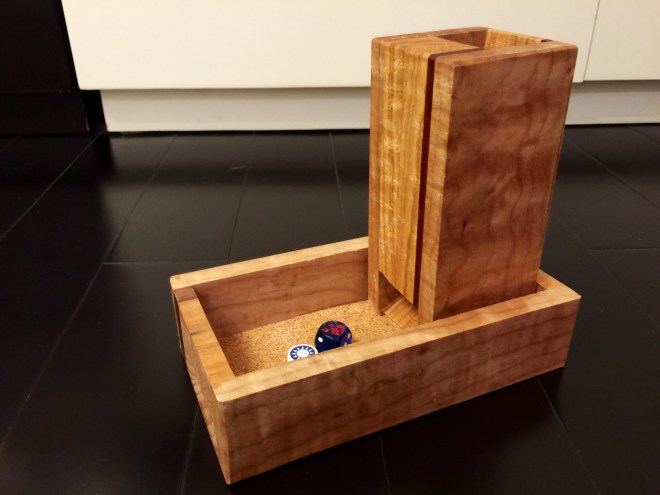PP08 No Simple Victory is from the ASL March Madness Partisan Pack , produced by the Kansas City Irregular ASL Club for the March 13-15 2009 March Madness tournament. According to Mark Pitcavage’s Desperation Morale site, only 75 copies were made. I am lucky to have access to one and let me tell you, the storylines therein FASCINATE me.

An NKVD badge replica
The setting was May 1945 in Kurylowka Poland. The Soviets had just “liberated” Poland and the Soviet NKVD started to hunt down former members of the “Armia Krajowa”.
A number of anti-communist partisan groups sprung up. One such group was the National Military Alliance or the “NZW” and one of their biggest battles happened here. The NZW prevailed, but the NKVD returned the next day and burned the village of Kurylowka to the ground.

Introduction and Setup : The NKVD officers are all Commissars. The Poles on the other hand have 5 MPs instead of the usual 4. The NKVD enters from the right and a trench in the middle of the village square is the “Victory Condition” hex. I was the Partisans and Carl Nogueira the NKVD (Carl’s analysis of the scenario is at the bottom of this post). I made a number of mistakes in this scenario. One of which was putting my SSR given Set DC in the VC hex. Since the NKVD wins immediately upon seizing that hex, blowing them up subsequently really doesn’t help. I elected to exchange my 2 Fortified Location into 2 tunnels : one leading to the pillbox that oversee the VC hex and another leading from small clump of buildings to the right of the village so that units could rout back.
There are two approaches to the village. One is to take the long way through the Forest on the bottom of the map. That burns a lot of time. The other way is to move through the open ground from the right to the left. That carries a much higher risk of casualties which the NKVD player has to mindful of. One of the SSRs states that the NKVD is subjected to BATTLEFIELD INTEGRITY (A16). There’s a number on the broken side of each counter. The NKVD starts up with a Battlefield Integrity score of 260. When the NKVD takes casualties a running total of the number on the back of the counters is taken. The NKVD is then subjected to an Integrity Check every 10% (or 26 in this case) of the starting score. Fail it once, and the NKVD has their ELR reduced. Fail it twice and the NKVD pack up and go home.
I assumed Carl would take a frontal approach through the scant cover the open ground offers (the NKVD had no smoke). The Partisans had Molotovs though. I tried to use Molotovs frequently early game (couldn’t be used inside the forest though) in the hope of setting something on fire “accidentally” but I completely forgot to use it late game when it really counted.

Turn 1 Russian : The Russians, I mean ALL the Russians headed for the forest! I started thinking about how I could redeploy to a completely different angle of attack.

Turn 1 Partisans : The Partisans had to redeploy to a very possible attack through the forest and from the bottom of the village! My tunnels and my pillbox were rendered useless. A few units had to come out of HIP to redeploy. Anyway, it was what it was – a new game. Good thing our Partisans had 5 MF instead of 4!

Turn 2 Russian : The Partisans in the forest had to do the best they could now. I didn’t move far enough from the NKVD and therefore got my units surrounded a few times. The NKVD was of course deadly at close range. Concealment didn’t offer enough protection.

Turn 2 Partisans : The three Partisan squads in the forest were of course completely outnumbered. I hope to delay the NVKD as much as possible by using brokies to block the way as they rout. I moved an LMG squad out to the clump of trees to help protect the “heavies” in case the Soviets change their mind and decide to skip long the edge of the forest instead.
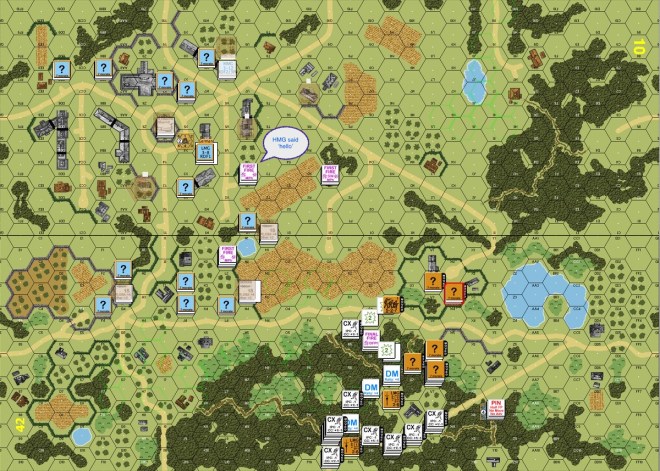
Turn 3 Russians : The Russians came in strong. The Partisans were quickly surrounded and destroyed. The Russians tested the scene at the edge of the forest. The Partisan HMG appeared to convince them otherwise.

Turn 3 Partisans : The NKVD needed to be contained in the forest. A few more Partisan squads were sent in there to rack up more casualties if they could. At this point, I was a little reluctant to send even these folks. The NKVD had an advantage up close while the Partisans were better in open area because of their enhanced mobility and longer range. Molotovs couldn’t be used in forests either. Kindling is NA for this scenario but I certainly hoped to set a few structures on fire “accidentally”.
Here’s also where I realised my next stupid move : I got my mortar (ideal against folks trying to come out of the forest, no?) in a trench BEHIND a hedge. They couldn’t see anything. The gun crew had to scramble to re-situate the mortar now. Could they do it in time?

Turn 4 Russian : This was an epic turn. The NKVD studiously picked a spot to come out of the woods that avoided the HMG. So an LMG unconcealed to plug the gap. Did it ever! That residual where the path open up from the forest saw a good number of casualties. A few came forth nonetheless, led by a 9-0 Commissar, and rushed the mortar crew. One of the partisan squads was met by a number of NKVD and was presented with a DC pack as well ..

Turn 4 Russian still : Our partisan squad survived all Advance Fire AND a DC blast!! NKVD fixed bayonets and looked to move in ..

Turn 4 Russian Close Combat : The NKVD squads moved in and even managed to ambush our partisan squad! Fortunately they rolled infiltration for our brave partisan squad. While the partisans were pinned and couldn’t move, the NKVD squads thought better of it and moved off.
On the far side of the open ground, the Russians wrestled with a partisan squad sent to mess with them. The partisans got the ambush here and decided to move off to the Russian rear.

Turn 4 Partisan : Our brave partisan squad moved off to another position where the NKVD might decide to emerge. The other partisan decided to back off to get some distance between them and the short range Russian bear. On the other hand, the HMG crew grabbed their toy and ran off to the woods to get a better angle at the emerging NKVD.
The mortar crew couldn’t get away with their toy unfortunately, they were broken by fire from pursing NKVD.

Turn 5 Russian : At this point the NKVD had already breezed right through their first Battle Integrity check. Two partisan squads fought hard at the edge of the forest the best they could.
Russians on the far right decided to rush the HMG in the woods as well. Thank goodness to mutually supporting positions they would all eventually be broken.

Turn 5 Partisans : The partisans sent another squad to the far right to go after the broken NKVD squads. Who knows? May be they will force another Battle Integrity check!
Partisans were trying hard to back off into the clearing before the roads lead into the village – but it was hard.

Turn 6 Russian : The Russians tried the captured Polish mortar, hoping to get smoke for the final attack. Fortunately it melted in their hands rather patriotically
The Poles kept backing off and putting residual on open ground. I was also starting to think that I should bring the partisan squads on the far right back into the village for the final fight.
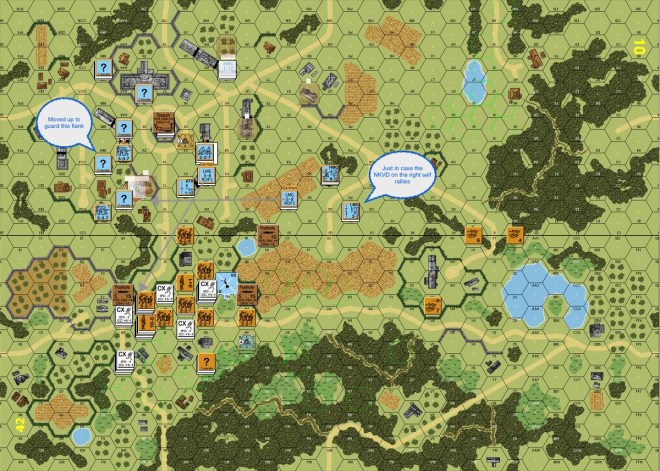
Turn 6 Partisan : I saw the left side of the village as being particularly vulnerable. I moved a few more squads up from the back to cover that. The HMG and 2 LMGs were moved to the open so they could take advantage of their range. The Russians would have to decide whether to divert squads to them or let them be.
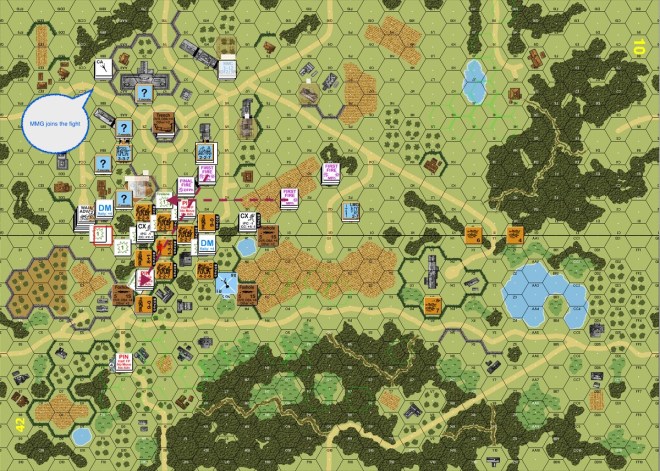
Turn 7 Russians : The BPV was now at 88. The Russian passed the last 3 Battle Integrity Check without breaking a sweat. The next one’s going to be 16 BPV off – which meant 3 or 4 squads, depending on what they were.
Fire lanes were deployed where possible to wear the NKVD down – but they kept coming. When they got adjacent, the Partisans knew they wouldn’t last much longer. An MMG deployed on the left opened up as well. Unfortunately it broke down almost immediately.

Turn 7 Partisans : We ran out of room to back off now. The front row of NKVDs got too close and the Partisans got blown away, firing squad style.
Getting folks in their final position ..

Turn 8 Russian : So this is just a shot of the start of the final turn. There’s still an MMG that remained “HIP” on the (hopefully) more vulnerable looking side.

Turn 8 Russian, after the Movement Phase : Carnage! The Russian kept running squads though the gauntlet, even tried to place a DC on the squad in the target hex. After they got a few in for the ensuring Close Combat phase, they ran the rest of the NKVD away from village to avoid more casualties!

Turn 8 Russians – the end : Then it happened – the Russians fired into the concealed partisan squad in the target hex. They got a morale check even with the +2 TEM.
Box cars.
The partisan squad reduced and broke. The Russians were therefore in a position to advance in.
The Russians won.
Here’s the Analysis from Carl Nogueira :
It was a pretty intense game. I looked for opportunities to launch a human wave, to try and close up the ground needed to be crossed faster. However, that was of course not possible in the woods. Once out of the woods, I had a chance to do it, but I was not happy with the preparation of the defense. I had been unable to soften him up/draw off enough shots with the non-human wave crowd. It looked like the boys would be heading into a meat grinder and these guys don’t do meat grinder with the BPV rules. Not to mention the last sentence of A9.222. This makes human waves suicidal if the opponent has the ability to lay down several firelanes. Jackson had that opportunity. Human wave called off. Of course with these clowns, it was more of a sub-human wave anyway.
As Jackson alluded to, I initially went through the forest on the bottom board. It appeared to be lightly defended and it afforded me the ability to shoot back at his forces. Something my short range and lack of long range SW didn’t afford in the open. That combined with the Battlefield Integrity made my NKVD boys “vulnerable” in the open. (I always wanted to use NKVD and integrity in the same sentence. It’s a lot tougher than it looks.) The forest looked lightly defended to boot, so I was hoping to blow through there as fast as possible.
In the even, it took about turns, using my best Tampa style tactics to whip Igor forward. The attempt to put pressure on the Koresh compound and use those forces to be a diversion against the center, failed spectacularly. Fortunately, they graced me by not dying in the process. If there is one lesson that Jackson will take with im from this game, it is entrenched units behind a wall/hedge only see adjacent to the wall/hedge. No farther. His mortar was positioned under a foxhole thusly. As was a flanking squad and the VC hex guard. It didn’t cost him the game, but it did cost some opportunities.
I popped out of the woods and headed up the road, mostly to the right of the road, straight for the VC hex. Jackson’s units are quite fleet of foot by ssr in this, so they easily repositioned and got in front of us. Their mf base of 5 for MMC making that easily possible. After some early success heading up the road, I determined I was a turn behind. As a result I really took some chances. Even running some units into hexes I knew they couldn’t rout out of to try and force the pace. I was soon dissuaded. However, Jackson did decline a surrender which enforced NQ for my boys surrendering. That was more blessing than curse for me as I was able to have more liberal rout routes after that, FTR not withstanding.
I had to change the axis of attack to straddle the road more, as he had too many fire lanes to the right of the road. I was able to ooze out over the road and get enough fire down to open a path through the stone building that guarded the VC buildings left flank, but only on the next to last turn. That meant running through the open to try to get to the last VC hex.
It had looked really grim since Jackson had a 4.35 average DR over 7 key shots to start Russian turn 7. As a result, I had to take two tests for BI. I passed the first but failed the second. If it happened one more time, he gets the win. Fortunately, as is wont to happen, the dice turned back the other way. My boys discovered their meat sacks and my morale check DR improved drastically at just the right time. One 5-2-7 went berserk and tied up a key piece on the approach march. We were able to survive a nice fire lane Jackson laid from a HIP unit leading to the VC hex. Finally, I was able to get a G/O 5-2-7 and two 3-2-8 HS, one of which had a DC, ADJACENT to the VC hex. The 5-2-7 fired at his concealed unit in the trench, a 4+2, to try and strip him of concealment. The thought being it would make the thrown DC that much more effective done in that order. I lucked out with a 3-1 for a NMC. Jackson boxed the NMC and that was the game.
We discussed later and both felt the scenario is rough on the Russians. That said, the ROAR record now has it 3-2, pro-Russian. Still, I think the Russians have the longer road. That low ELR and short range for their force are real handicaps. Combined with needing to keep an eye out for the battlefield integrity makes it tough. As for the Partisans, they have typical partisan issues. The 5 mf rule for the MMC is a real nice touch. One thing the scenario is though is fun. All in all, it was a very enjoyable time and game.

Map of Poland from 1944





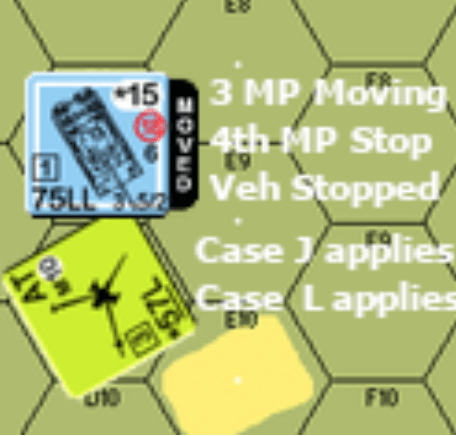
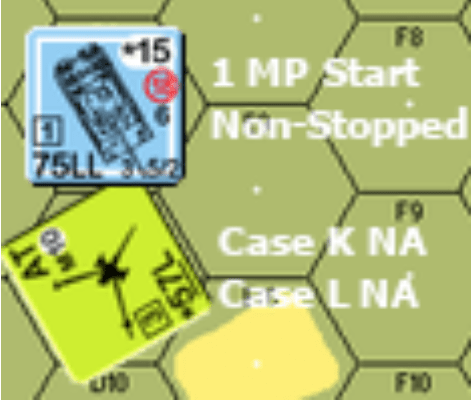
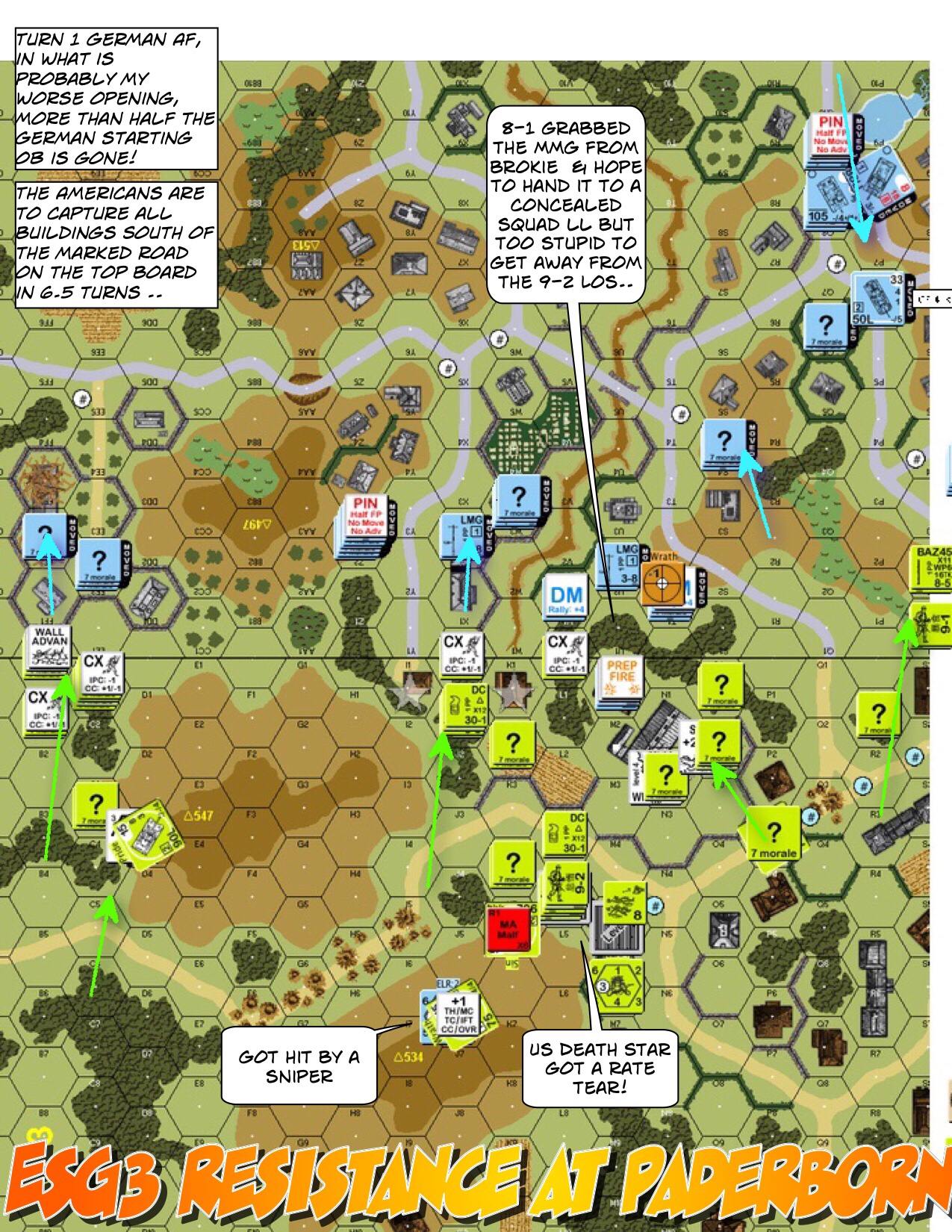




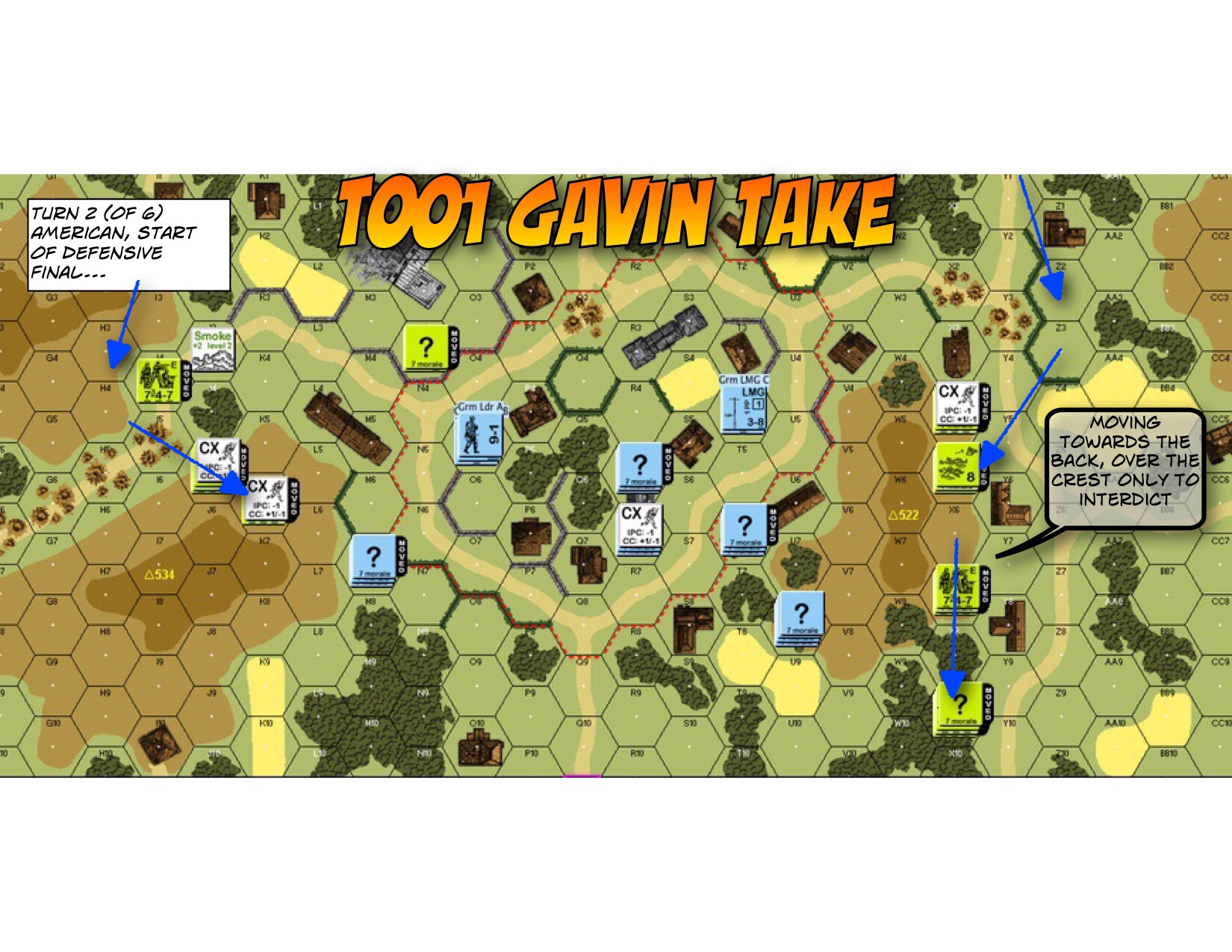



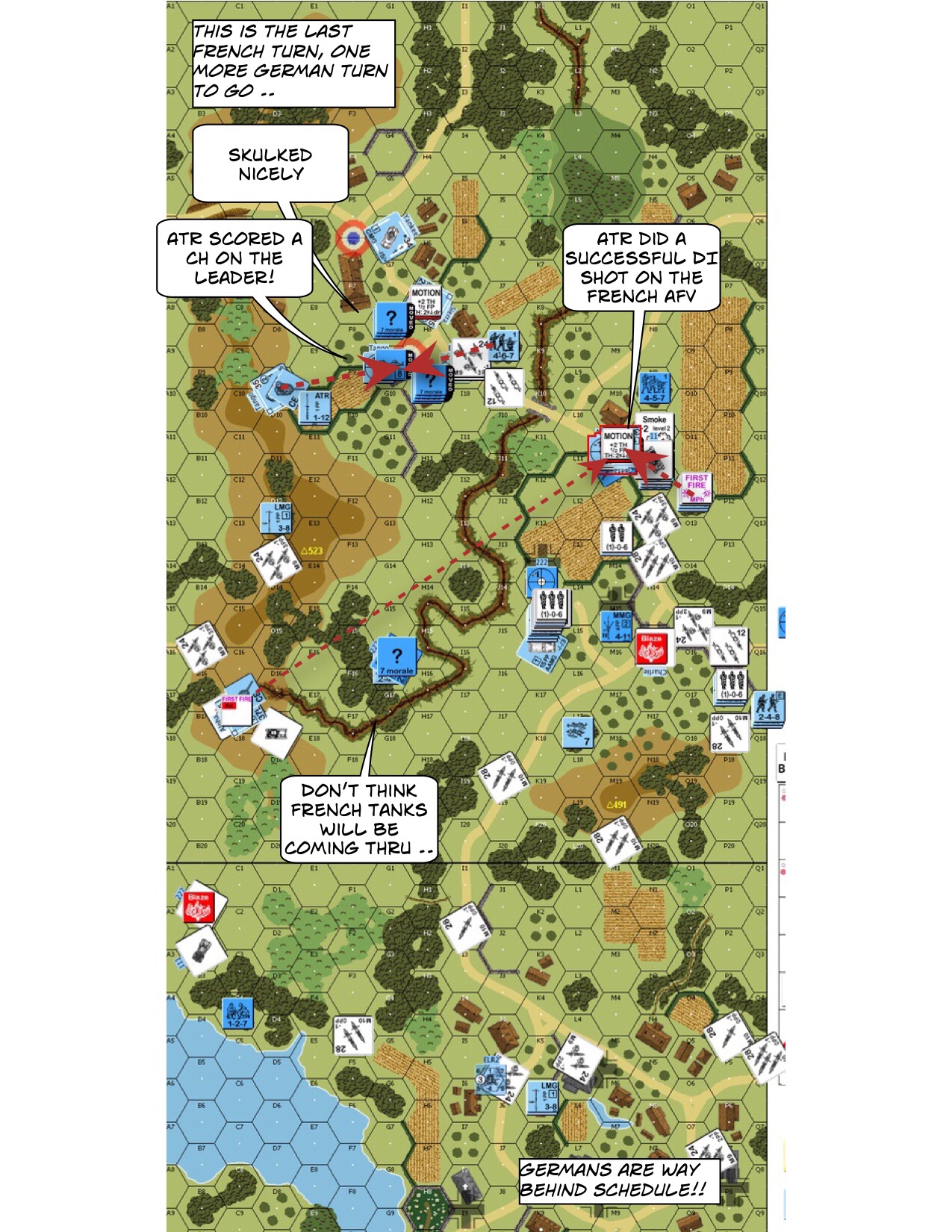

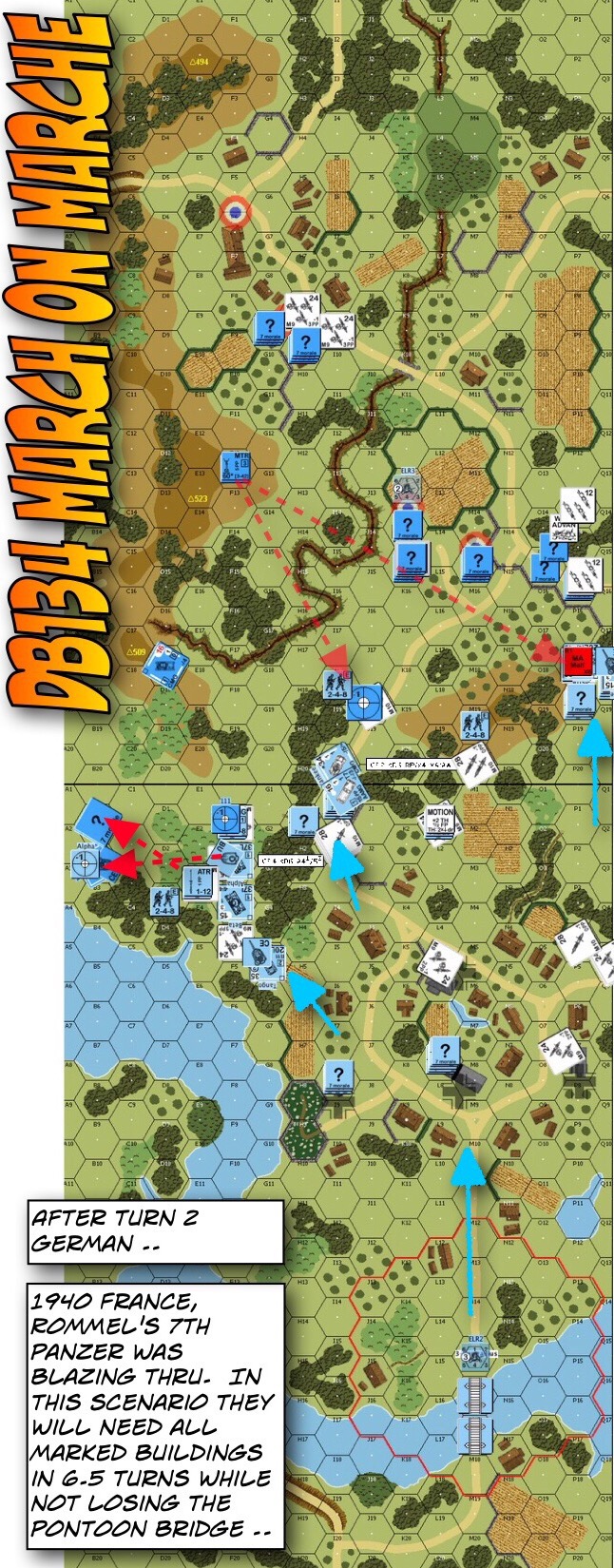


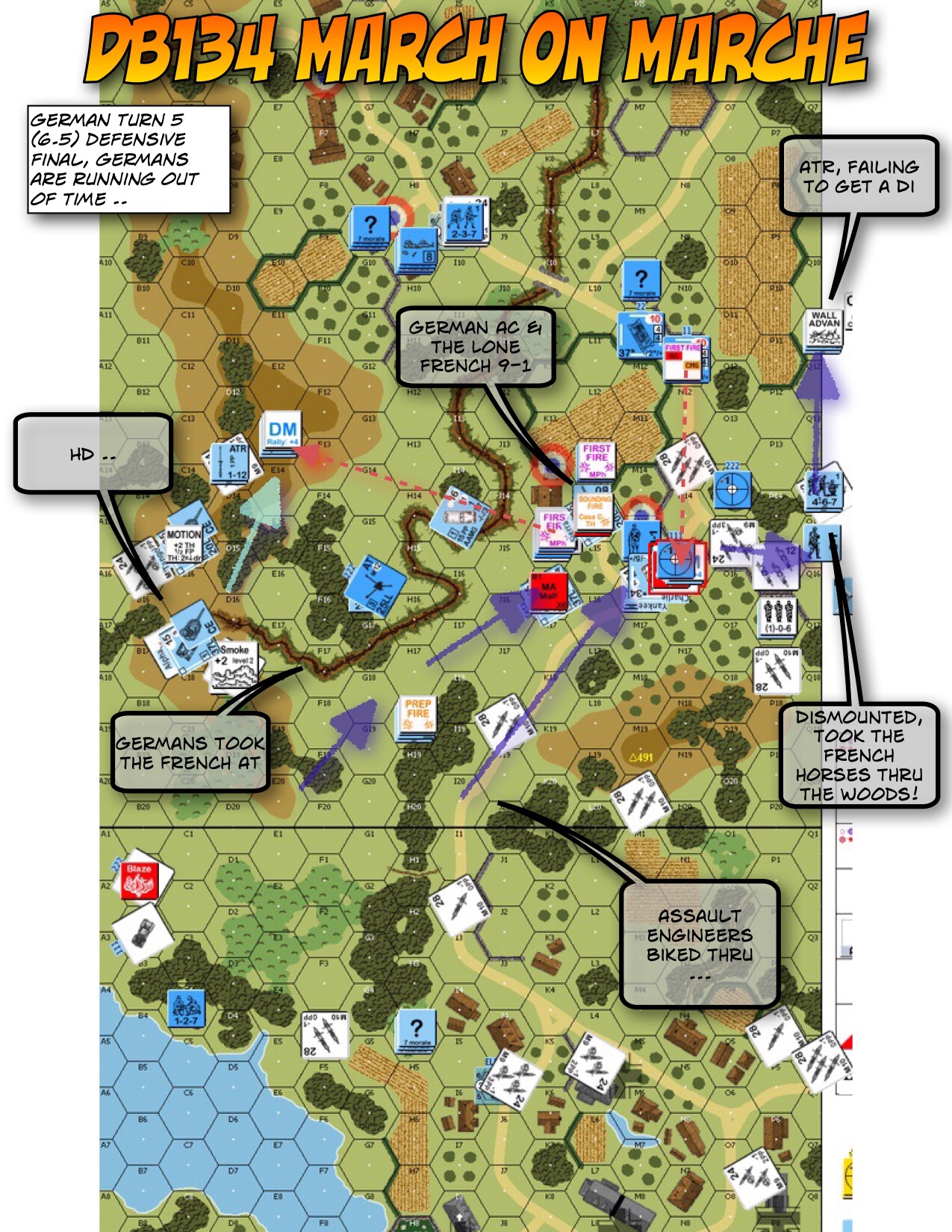







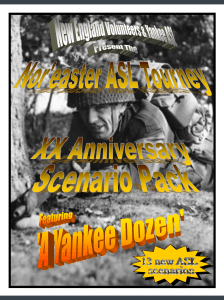

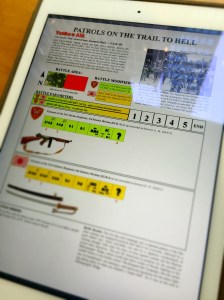 YASL#8 Ass Backwards
YASL#8 Ass Backwards
 Who knows? We might even see a couple starting to come out of Asia!!
Who knows? We might even see a couple starting to come out of Asia!! 



